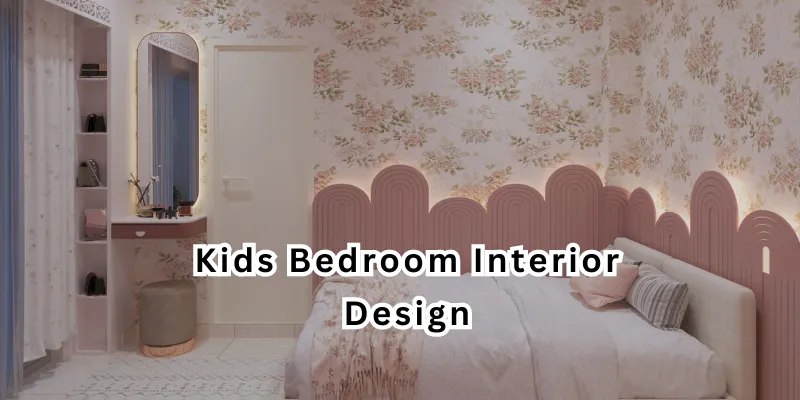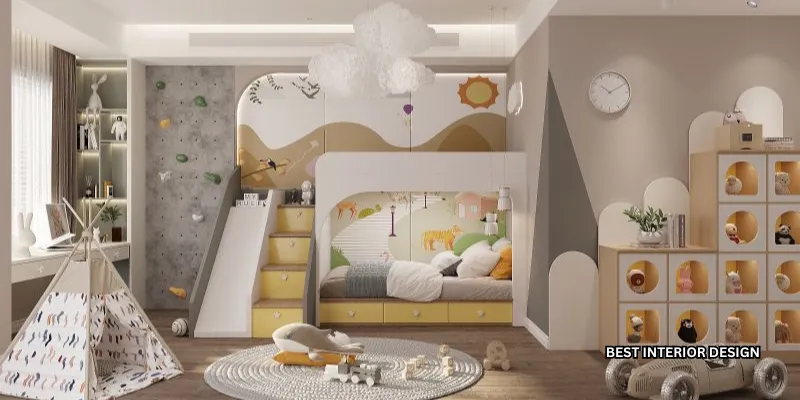As children grow and develop, their bedroom becomes much more than just a place for rest. It evolves into a sanctuary where they can freely express themselves, explore their interests, and let their imaginations soar.
It’s a space where they learn, play, and create, making it crucial to design with their evolving needs in mind. A child’s bedroom should be more than just a room with a bed; it should be a carefully curated environment that supports their growth and development.
In this guide, we’ll delve into the multifaceted world of designing a kid’s bedroom. We’ll discuss how to strike the perfect balance between functionality and creativity, ensuring the space is not only safe but also inspiring.
Understanding the Needs of Children
When designing a kid’s bedroom, functionality should be at the forefront. Consider how the space will be used on a daily basis. Ensure there is ample room for activities such as playing, reading, and studying.
Opt for furniture that serves multiple purposes, such as beds with built-in storage or desks that can be transformed into play tables.
Safety is paramount in a child’s bedroom. Be mindful of sharp edges on furniture, secure heavy items to the walls to prevent tipping, and use childproof locks on drawers and cabinets. Electrical outlets should have covers, and cords should be out of reach to prevent accidents.

Designing for Creativity and Imagination
Interactive Elements
Stimulate your child’s creativity with interactive elements in their bedroom. Consider a chalkboard wall where they can unleash their artistic side, or a reading nook with cozy cushions and a variety of books. Interactive wall decals or a small indoor tent can also inspire imaginative play.
Personalization and Customization
Involve your child in the design process to create a space that reflects their personality. Let them choose colors, themes, and decor items. Display their artwork and achievements proudly on a dedicated gallery wall. Personalized bedding and pillows can add a sense of ownership to their space.
Balancing Aesthetics with Functionality
Choosing Appropriate Furniture
Selecting the right furniture is crucial for a functional yet aesthetically pleasing bedroom. Opt for sturdy pieces that can withstand the wear and tear of childhood. Bunk beds are a popular choice for shared rooms, while loft beds can maximize vertical space. Invest in a quality mattress for a good night’s sleep.
Maximizing Storage Solutions
Kids accumulate toys, books, and clothes rapidly. Incorporate plenty of storage solutions to keep the room organized. Utilize under-bed drawers, bookshelves, and storage bins. Labeling containers can help your child learn to tidy up after themselves.
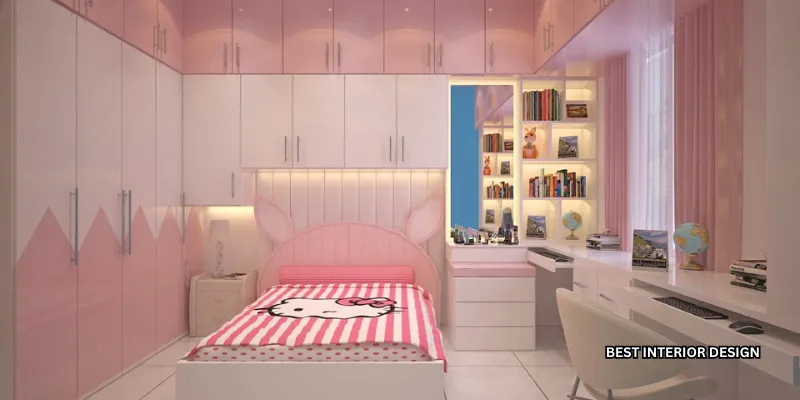
Incorporating Themes and Color Psychology
Creating a Stimulating Environment
Themes can transport a child to their favorite fantasy world. Whether it’s outer space, a jungle adventure, or a princess castle, a theme can tie the room together. Use wall decals, bedding, and accessories to bring the theme to life. Consider using vibrant colors to stimulate creativity and energy.
Implementing Relaxing Elements
While stimulation is important, so is creating a calming environment for sleep. Soft, neutral colors like pastels or light blues can promote relaxation. Incorporate cozy rugs, blackout curtains for a good night’s sleep, and soothing wall art.
Lighting and Ambiance in Kids Bedroom Interior Design
Natural Light Integration
Natural light has a positive impact on mood and health. Position the bed and study areas near windows to maximize natural light exposure. Ensure curtains or blinds are easy for your child to operate to adjust light levels.
Creative Lighting Fixtures
Apart from natural light, incorporate creative lighting fixtures for different purposes. A pendant light can create a focal point, while adjustable desk lamps are ideal for studying. Nightlights provide comfort and safety during nighttime.
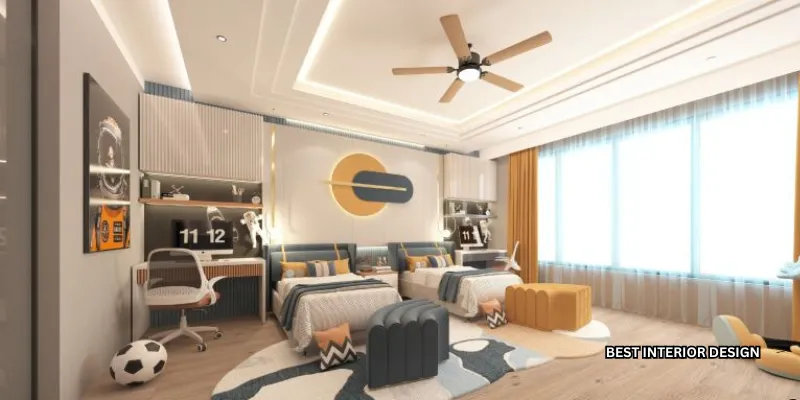
Flooring and Textures
Durable and Easy-to-Clean Options
Choose flooring that can withstand spills and playtime messes. Hardwood floors with rugs for comfort are a popular choice. Alternatively, durable laminate or vinyl flooring can be easy to clean and maintain.
Soft and Inviting Textures
Soft textures like plush rugs, cozy blankets, and cushions can make the room inviting and comfortable. Consider a soft bean bag chair for reading or lounging. These textures also add warmth and depth to the room’s design.
You may like it: Different types of interior design flooring
Eco-Friendly Practices
Sustainable Materials
Create an environmentally friendly space by choosing furniture and decor made from sustainable materials. Look for FSC-certified wood products, organic bedding, and non-toxic paints. Teach your child the importance of caring for the environment through their bedroom design.
Energy-Efficient Solutions
Opt for energy-efficient lighting fixtures and appliances. LED bulbs are long-lasting and consume less energy. Teach your child to turn off lights when leaving the room to instill good energy-saving habits.
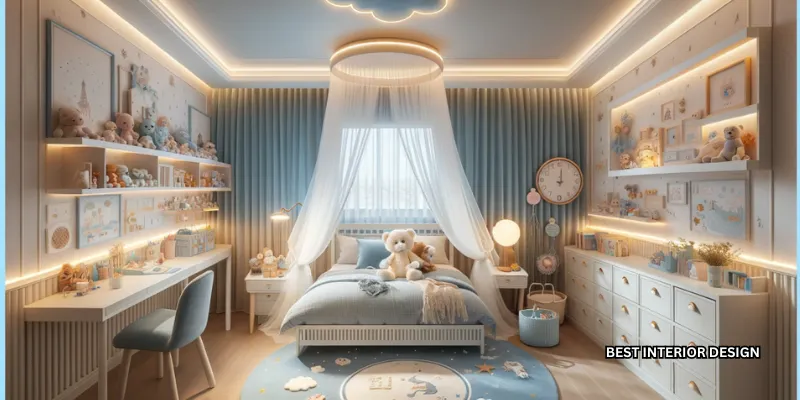
Budget-Friendly Tips
DIY Projects
Get creative with DIY projects to personalize the space on a budget. Create a custom headboard using reclaimed wood, or repurpose old furniture with a fresh coat of paint. Handmade decor items like paper lanterns or fabric bunting can add charm to the room.
Repurposing Furniture
Instead of buying new furniture, consider repurposing items you already have. An old dresser can be transformed into a stylish storage unit with new knobs and a fresh finish. Repainted bookshelves or desks can give them a new life in the room.
Technology Integration
Educational Gadgets
Incorporate technology in a beneficial way by including educational gadgets. A learning tablet or interactive globe can enhance your child’s curiosity and knowledge. Ensure screen time is monitored and limited to appropriate hours.
Safe Use of Electronics
Ensure all electronics in the room are child-friendly and safely secured. Keep cords organized and out of reach to prevent tripping hazards. Consider installing cord covers or using cable clips to keep them tidy and safe.
Safety Measures
Childproofing Essentials
Childproofing the room is essential for a safe environment. Install outlet covers, corner guards on furniture, and safety latches on drawers. Anchor heavy furniture to the walls to prevent tipping accidents.
Fire Safety Considerations
Place a smoke detector in the room and test it regularly. Educate your child about fire safety and establish an evacuation plan. Avoid placing flammable items near heaters or electrical outlets.
Organization and Decluttering
Teaching Organization Skills
Encourage your child to participate in organizing their space. Use labeled bins and baskets for toys, books, and clothing. Teach them to put things back in their designated places after use.
Rotating Toys and Items
To prevent clutter and maintain interest, rotate toys and decor items regularly. Store some toys out of sight and bring them out later for a “new” play experience. This also helps keep the room feeling fresh and exciting.
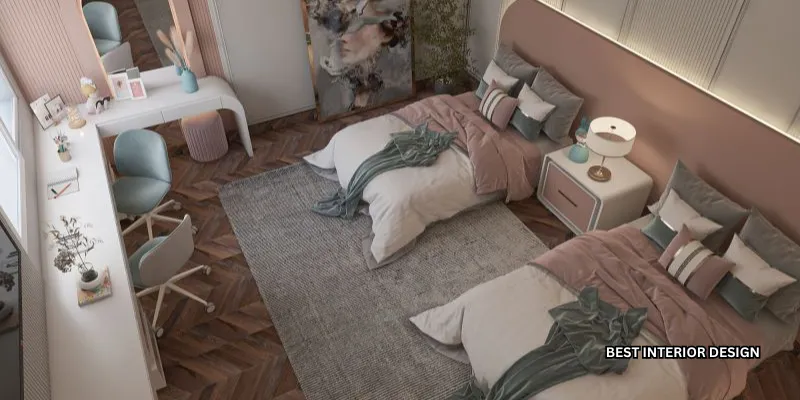
Creating Multi-Functional Spaces
Homework and Play Areas
Designate specific areas for different activities within the room. A study corner with a desk and ergonomic chair encourages focus and productivity. A designated play area with a rug or play mat defines where playtime happens.
Sleep and Relaxation Zones
Separate the sleep area from active play areas to promote better rest. Use dividers like curtains or shelving to create distinct zones within the room. Make the bed a cozy retreat with comfortable bedding and pillows.
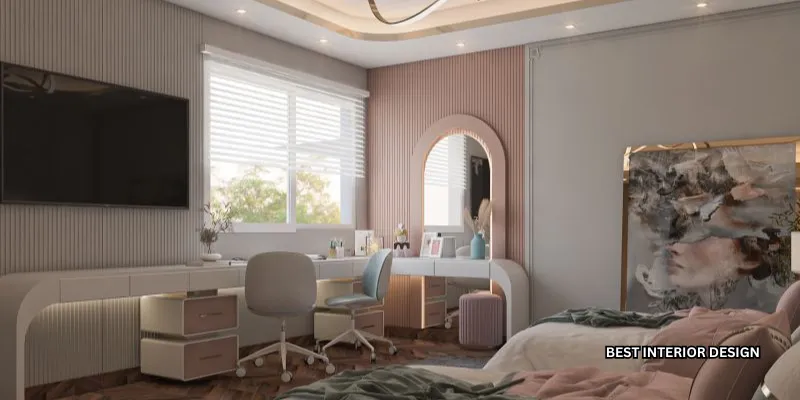
Bottom Line
In wrapping up our exploration of kids’ bedroom design, it’s clear that creating this space is both an art and a science.
It’s about more than just arranging furniture; it’s crafting a haven where our children can grow, play, and dream freely.By merging functionality with imagination, we can build a room that not only meets their practical needs but also sparks their creativity.
From the interactive elements that fuel their imagination to the safety measures that give us peace of mind, each aspect is crucial.So, as you embark on this journey, involve your child, listen to their ideas, and together, create a space where magic happens every day.
